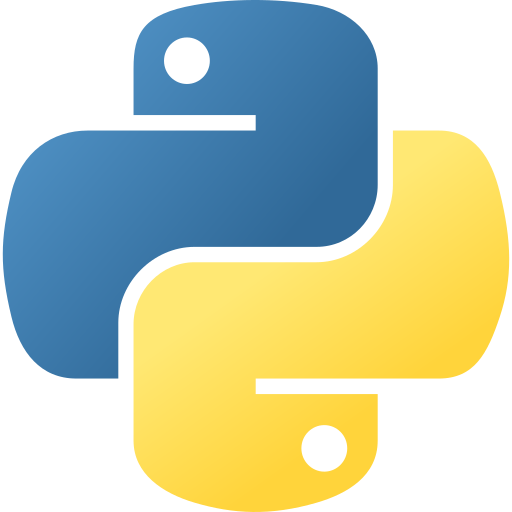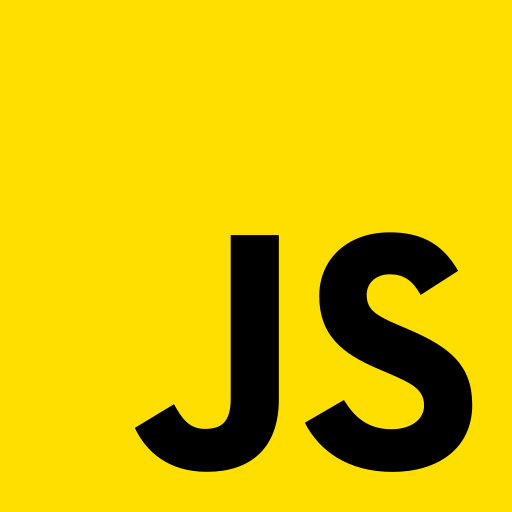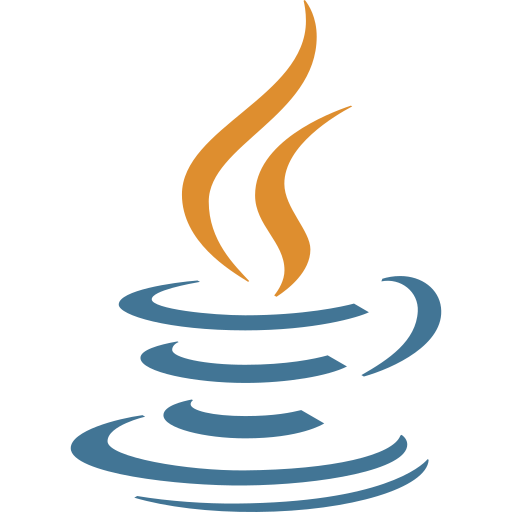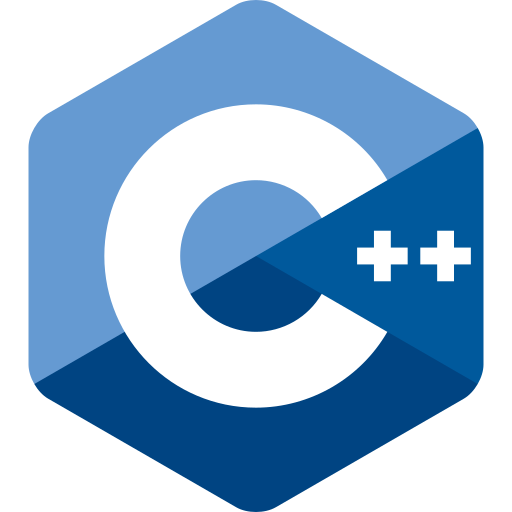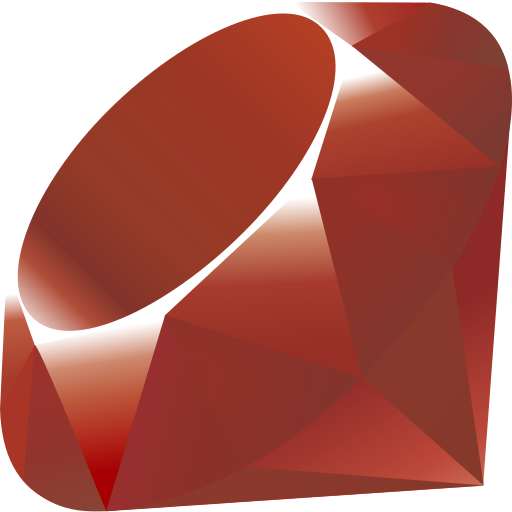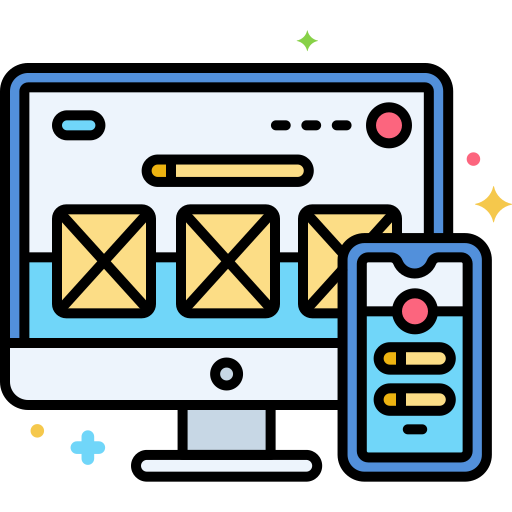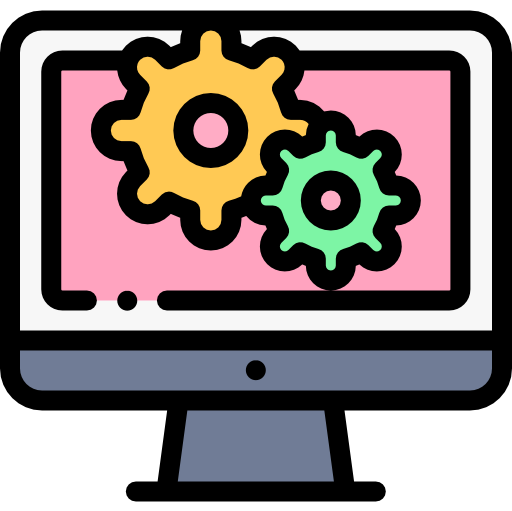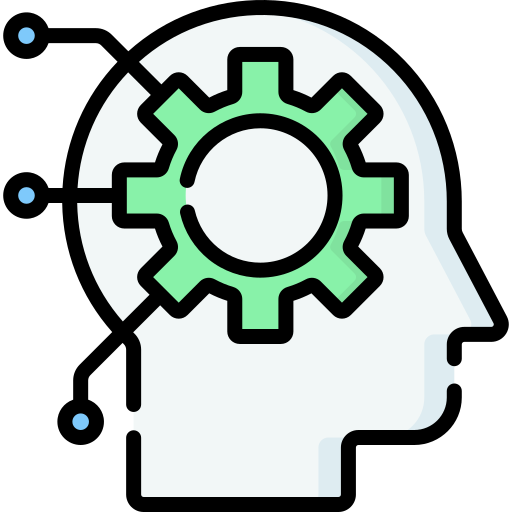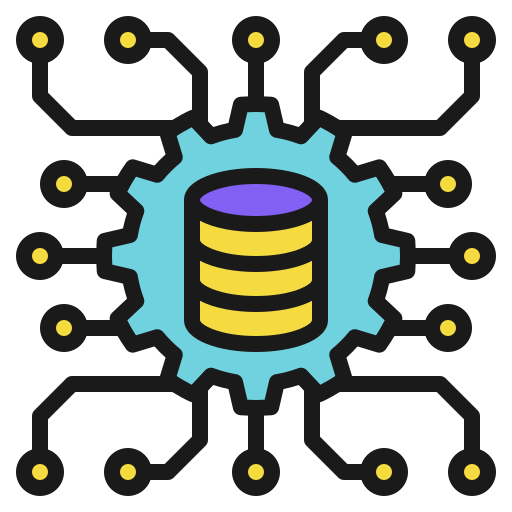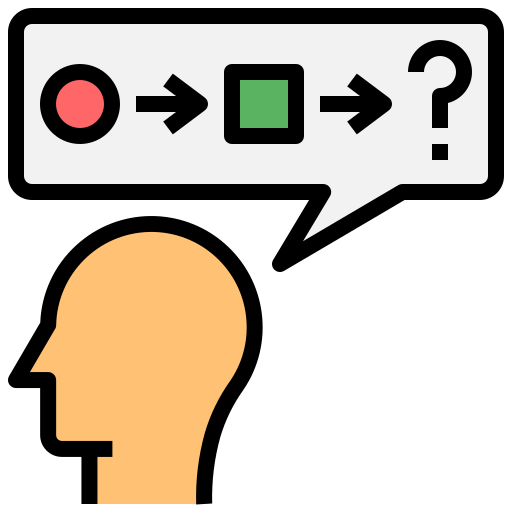Learn how to code in 2026 with these courses
Considering a career in software engineering? We’re here to help with some of the very best resources for prospective programmers.
We’ll cover:
- What language should I learn?
- Pursue a software development specialization
- Six language-based courses for learning how to code
- What makes these courses different?
- Start learning today
What language should I learn?#
Coding is no different than learning a language. One requires the ability to think logically and training the mind to think in a structured and systematic way. Some people even claim that one need not learn to code, but rather learn to think.
Before you can start coding, you’ll need to pick a language. Programming languages have different strengths and limitations, and are therefore better suited to solving different problems and fulfilling different use cases. You will want to consider which developer career path seems most appealing to you in order to know where to start.
However, it is worth noting that this decision isn’t as final as it may seem. Your first language is simply that– your first. You have a long career ahead of you and there are likely to be plenty of other languages and technologies that you’ll need to learn (in fact, developers often learn multiple languages, frameworks, and technologies throughout their career).
Let’s briefly cover a few of the most popular programming languages.
Python
Python is renowned for its beginner-friendly characteristics. It is famously easy to read and debug, but this doesn’t make it just for beginners. Python has been steadily gaining popularity for many years now, and is often in the headlines for a wide variety of applications, ranging from web development, to data science and artificial intelligence.
Learning Python is one of the very best ways to start your software development journey, and many other certifications and bootcamps will start learners with Python for the very basics of writing code.
Get started in Python today
This course uses an active learning approach to teach Python programming to beginners. You’ll interact with the code from the start, using everyday logic and fun challenges to build confidence. You will learn essential programming concepts through interactive examples and mini projects like input/output, decision-making, error handling, and simple logic. Whether new to coding or just starting with Python, this course provides the perfect foundation to develop your problem-solving skills and easily write your programs. More than anything else, this course aims to make you a lifelong learner and serve as a strong starting point for a successful career in computing. You don’t need any programming experience to begin.
JavaScript
JavaScript (often abbreviated to JS) is a multipurpose programming language, much like Python, but it also occupies a much larger space in web development. Much of the functionality of web applications and websites comes from JS. If you plan on building websites or working in “front-end development” it’s a good idea to learn JavaScript. Thankfully, JS is also quite beginner friendly and is a great language for popular programming styles like object oriented programming (OOP).
Get started in JavaScript
In this course, you’ll learn JavaScript from scratch by building things step by step. You’ll start with simple interactions like displaying messages and buttons that respond to clicks. Then, you’ll teach your code to think using logic, remember things with variables, and make decisions based on the user’s actions. You’ll explore variables, functions, objects, DOM manipulation, event handling, loops, and arrays to build simple yet interactive real-life projects. You’ll go from writing your first line of code to building mini apps like a quiz, a to-do list, and even your digital pet! Every lesson is project-based and beginner-friendly—designed to help you create, not just code. By the end, you’ll confidently understand how to control the page, respond to users, and build interactive web experiences.
Java
Java is a versatile programming language that is similar to C and C++. Java remains one of the most popular programming languages, specifically for building client-server web applications.
Java became popular because of its support for object-oriented programming (OOP), but also to improve upon the limitations of older compiled languages (like C++). Java allows programmers to write once, run anywhere. This means that code written in Java can run on any supported platform. With this ability, the introduction of Java represented a big step in cross-platform software development.
Get started in Java today
You’ll start Java with the basics, such as printing messages, doing math, and working with user input, before exploring loops, conditionals, and object-oriented programming. Along the way, you’ll build real console apps, like games and menu systems, while learning how to structure your code using classes, methods, and objects. This course emphasizes hands-on learning and real-world modeling, making Java feel less intimidating and more intuitive. Whether you’re aiming to become an Android developer or backend engineer, or just want a solid foundation in programming, this course will help you write clean, structured code and confidently take your first step into software development. You need to know absolutely nothing about programming before your first lesson.
C#
C# (pronounced “C sharp”) is a simple, modern language that is based on older languages like C and C++. Given these roots, skills in C, C++, and C# are easily transferable. Additionally, Java and JavaScript programmers will also see familiarities in C#.
One of the main draws to C# is .NET. .NET is an open-source developer platform built and maintained by Microsoft. Developers can use C# to build highly functional, secure applications that run in .NET.
Get started in C# today
C# is a versatile and robust language, ideal for developing software applications from games to enterprise solutions. This course introduces C sharp fundamentals, starting with writing your first program and understanding core concepts. You'll progress to more complex topics like loops, string and array manipulation, and mastering best practices for code organization. By the end, you'll be well-prepared to pursue opportunities as a C# developer in industries like gaming and finance, equipped to create high-performance applications across platforms.
C++
Like all of the previous languages, C++ (sometimes written as CPP) is a readable language that is well suited for plenty of different programming tasks. C++ is an extension of the C language that was built with object oriented programming in mind. It has expanded significantly over time and supports many different programming disciplines.
C++ is most commonly used for desktop applications, servers, databases, and video games. Most big budget AAA video games are built in C++.
Get started in C++ today
This beginner-friendly course teaches C++ through a practical, hands-on approach. You’ll begin by learning how to communicate with the machine through input/output, simple calculations, and variables. Then, you’ll build programs to make decisions and repeat actions using conditionals and loops. As you progress, you’ll learn how to organize your code using functions, store data with arrays and vectors, and apply your knowledge by building mini projects like a number guessing game and a contact book. These exercises are designed to help you build confidence and reinforce your understanding. In the final section, you’ll build a complete project that combines all your skills in a creative, interactive program. Whether starting a tech career or just curious about coding, this course will give you a solid foundation in procedural C++ programming.
Ruby
Ruby is used for a wide range of applications. Ruby on Rails is a framework for web development, but Ruby can also be used for data processing, automation, and static site generation. Ruby is often compared to Python as a beginner programming language as they share a lot of functionality.
Get started in Ruby today
The Ruby programming language, known for its simplicity and readability, is perfect for programming beginners. This course introduces core programming concepts and problem-solving techniques, providing a solid foundation in Ruby. You’ll start with basic program development, decision-making, loops, strings, and arrays, reinforced by hands-on exercises, quizzes, and coding challenges. By the end of the course, you’ll gain essential skills that can advance your career as a Ruby developer in the tech industry.
Should you learn TypeScript too?#
You’ve probably heard of JavaScript—it’s one of the most popular programming languages in the world. But in 2026, most front-end (and even some back-end) jobs expect you to know TypeScript, too. TypeScript builds on JavaScript by adding types, which help you catch mistakes before they happen and write cleaner, more reliable code.
Here’s how to think about it:
Start with JavaScript if you’re completely new — it’s easier to learn the fundamentals.
Add TypeScript once you’re comfortable — it’s now the standard for building production-grade web apps.
If you plan to work on large-scale projects or join a team, TypeScript is worth learning sooner rather than later.
High-level languages: interpretation and compilation#
High-level languages are languages that are readable by humans. When the code is executed they need to be translated into code that is readable by computers. This translation process can be done several different ways. Both interpretation and compilation translate human-readable code into machine code, but they do it in different ways.
These differences in translation means that program speeds may vary, or that code may not be cross-platform compatible.
Typically, languages like Ruby, Python, JS, and C# that execute at run-time are dynamically typed, and languages that execute at compile time, like C, C++, and Java are statically typed.
There isn’t one right answer#
Don’t become too mired in deciding which programming language is right for you. All of the above languages are dependable, popular languages that will help you develop your coding skills. The code and the specific use cases vary across languages, but you shouldn’t be too concerned about that right now. Instead, try to focus on building the problem solving skills and the muscle memory of coding so that you can grow as a programmer. There will be plenty of other opportunities to learn different languages in the future.
With that in mind, Python and JavaScript are among the two most popular languages for total beginners.
Use AI as your coding partner (the right way)#
AI tools like ChatGPT, GitHub Copilot, and Amazon CodeWhisperer are changing how developers learn. They can help you write snippets, explain errors, and even build small projects, but you need to use them thoughtfully.
Here’s how to learn with AI:
Pair-program with it: Ask for explanations of unfamiliar code.
Challenge it: Write code yourself, then ask AI to review or optimize it.
Double-check everything: AI isn’t always right. Treat it like a helpful mentor, not an answer key.
Avoid dependency: Try solving problems solo before asking for help—this builds your problem-solving skills.
Using AI responsibly can accelerate your learning without skipping the foundational thinking skills that make you a great developer.
A 30/60/90-day learning plan#
One of the hardest parts of learning to code is knowing what to do next. Here’s a simple roadmap to stay on track:
First 30 days: Learn syntax and fundamentals (data types, loops, conditionals). Build tiny programs like a calculator or a to-do list.
Next 30 days: Pick a specialization (web, backend, data) and complete a guided course or small project.
Final 30 days: Work on a real-world project—something you can show in a portfolio. Start contributing to open source or coding challenges.
Breaking your learning into chunks keeps you focused and builds momentum.
Pursue a software development specialization#
There are many different professional applications for any programming language you choose. If you want to get ahead, begin working towards a software engineering discipline. Develop your problem solving skills by thinking like a coder and solving real world challenges that prep you to be a professional software developer. Educative offers long-form paths that prepare you for a profession (even without a degree).
The world of software engineering is a broad one. There is a place for anyone, but finding that place may take a little bit of work. Let’s cover some of the most prominent specializations.
It’s impossible to really know what kind of developer you want to be until you get the experience to see what you like and what you don’t. With Educative’s paths you can see what real-world professionals do each day, and you can kickstart your own software development career by learning the tools and technologies you’ll need to showcase on your resumé.
Note: The roles listed below are only a small part of professional software engineering positions.
Front-end web development
Front-end development represents the user side of web development. Front-end devs are responsible for building the visible side of a web application. The primary languages front-end developers use are HTML, CSS, and JavaScript. While these are the most ubiquitous to front-end devs, there are many different tech stacks to choose from.
Become a front-end dev today
Front-end developers are in high demand because tech companies are always looking for ways to make their apps look and work better. To learn front-end web development, you must know HTML, CSS, and JavaScript. This Skill Path is the perfect place to start front-end development if you don't have a programming background. It comprehensively introduces you to the most important parts of the web, particularly the front-end part of web development. You will start with an introduction of basic terms in the web development domain. As you move on, you'll learn the basic pillars of front-end development, i.e., HTML, CSS, and JavaScript. Next, you’ll work on smaller projects to get a strong handle on HTML, CSS, and JavaScript. Lastly, you will get a full, step-by-step explanation of how to get a website up and running on the Internet. By the end of this Skill Path, you will know how to make functional websites and web applications.
Back-end web development
Back-end development is the server-side of web development. Back-end devs are responsible for website architecture, scripting, and communication with the database layer. There are plenty of different languages that can be used for back-end development. Just a few popular backend languages are:
- Python
- R
- Java
- JavaScript
- PHP
- Ruby
Front-end and back-end web development work together to create a functional web application that is easy and intuitive to use. The unison of these two disciplines is called full-stack web development. Full-stack developers follow the creation of a web application through the entirety of the system. They are able to work on every part of the application from browser, to the server and database.
Web development is a diverse world of software engineering, and we recommend that you spend some time getting acquainted with the nuances of each discipline. Front-end vs back-end is a common question beginners like to ask, but the best way to answer it is by familiarizing yourself with both and seeing what you gravitate towards.
Become a back-end dev today
Backend developers are responsible for the server side of web applications. According to a survey of recruiters, backend developers top the list of in-demand tech jobs. This Skill Path is designed for individuals who are interested in becoming backend developers but don't have any programming background. You will learn how to design and build efficient, scalable, and secure backend systems using Python and Django framework. By the end of this Skill Path, you’ll have a strong understanding of backend development concepts and the ability to build and deploy your web applications. Get ready to dive into the exciting world of backend development!
Machine learning
Machine learning is a complex process that centers around writing algorithms to sort, parse, and then learn from data. The main goal of machine learning is to develop models that can make informed decisions without manual input. By feeding machine learning models more data, more accurate connections between data can be formed, and the smarter the model becomes.
The most popular engineering discipline in tech right now is machine learning. Machine learning engineers are responsible for building artificial intelligence (AI), and they are in high demand at just about every big tech company. OpenAI’s ChatGPT made viral headlines, and Google and Bing aim to capitalize on the media’s attention to machine learning by announcing new AI powered search products.
Become a Machine Learning Engineer today
Start your journey to becoming a machine learning engineer by mastering the fundamentals of coding with Python. Learn machine learning techniques, data manipulation, and visualization. As you progress, you'll explore object-oriented programming and the machine learning process, gaining hands-on experience with machine learning algorithms and tools like scikit-learn. Tackle practical projects, including predicting auto insurance payments and customer segmentation using K-means clustering. Finally, explore the deep learning models with convolutional neural networks and apply your skills to an AI-powered image colorization project.
Data science
Data science is a broad term that encompasses multiple disciplines like: statistics, scientific computing, and data analysis. While data science is slightly different from software engineering, there is a great deal of overlap. Software is crucial when it comes to parsing large amounts of data. There are varying specializations within data science, so there’s a space for anyone when it comes to finding your niche.
One of the easiest ways to discover data manipulation is through Python. Our data science path teaches you Python from absolute beginner to full blown data analysis with Pandas, a Python library for data analysis. Python isn’t the only language for data science, or the definitive best. It is common for languages like R, Java, C++, C#, and JavaScript for a wide range of data science use cases.
Become a Data Scientist today
Start your journey with Python, starting from basic computational problem-solving and eventually progressing to advanced data manipulation and visualization techniques. In this Skill Path, you'll explore object-oriented programming and master data acquisition and handling with the pandas library. You'll refine your skills by creating dynamic visualizations using seaborn, Matplotlib pyplot, and NumPy, applying them to real-world projects like building a bar chart race and forecasting sales through data-driven insights. This Skill Path equips you with the essential tools and techniques for a career in data analysis, data science, or as a data analyst, preparing you to excel in data analytics roles.
Six language-based courses for learning how to code#
Learning how to code is no simple task. Luckily, Educative has you covered with our brand new introductory coding courses. These courses are aimed at total beginners and are written and vetted by university professors with decades of experience teaching people how to code. These resources explain all of the basics of coding in plain English. But, more importantly, they teach you how to think like a coder. By starting with the problem solving skills you already have, these courses help frame your learning journey in a practical, solution-oriented approach to programming. If you’re looking for the best way to learn the basics of programming, keep reading.
Like all of the courses and paths offered through Educative, these Learn to Code courses are text based. This means that you don’t have to spend time scrubbing through videos to reach the information you want to find. Additionally, Educative offers in-browser coding environments so you don’t have to bother with downloading and setting up your own code editor. All the code can be executed right in your browser.
Educative offers Learn to Code courses in each of the languages listed above.
What makes these courses different?#
As mentioned above, these courses are all aimed at complete beginners. They lay the groundwork for complete comprehension of introductory programming skills and beyond. Practicing and ingraining the fundamentals will set you up for success when it comes to complex topics like algorithms and data structures.
By starting your coding career off right, you’ll be able to soar to your dream job. Let’s briefly cover some of the fundamentals that these Learn to Code courses cover.
Problem solving logic
Now that you have an idea of what language you may want to start with, it’s time to get into the mindset of a programmer. Understanding the logic behind solving problems with programming is the most important skill when it comes to designing and implementing code.
Before you ever write a single line of code, we’ll make sure that you’re equipped with the tools to think critically and solve problems. Programmers are paid based on their ability to solve problems, not on their ability to write code. Learning a coding language is a technical skill that is integral to becoming a professional programmer, but it is not the most important quality of the best software engineers.
These courses will help you establish the logic and problem solving skills you need to begin solving coding challenges and understanding the true responsibilities of real software engineers.
The most important thing when figuring out how to solve software engineering problems is to take them one step at a time. You may be familiar with this approach from mathematics; the concept in computer science is very similar.
Below is an example of the type of problem solving you’ll need to be familiar with for more challenging coding problems.
Task: Measure water into different quantities.
Materials:
- As much water as necessary.
- One three liter bottle.
- One five liter bottle.
Rules:
- You may fill and drain the water bottles as many times as necessary.
- You may pour the contents of one bottle into another.
- You cannot partially fill a bottle.
Now that we have the groundwork covered, grab a piece of paper or open a text editor and write the step-by-step instructions for how you could measure out exactly two liters of water.
Remember: you can’t fill a bottle halfway.
Answer: Pretty easy, right? If you start by filling the five liter bottle, all you have to do is pour enough water into the three liter bottle to fill it. Then, you’re left with exactly two liters in the five liter bottle.
Other measurements: Try writing the steps to measure out exactly one liter of water. Now try four liters of water.
Hint: both processes should begin by filling the three liter bottle.
Of course, these types of problems aren’t really teaching you how to code, but they set you up for success when it comes to being a software engineer. Let’s get into what you’ll need to know when actually writing your first programs.
Check out this logic problem and more in-depth in our learn to code for absolute beginners series.
Programming basics#
There is a lot to cover when it comes to the basics of programming. The fact that each language has slightly different syntax adds a whole other layer of nuance to the topic, as well. (In programming, syntax are the rules that tell programmers what combination of symbols and characters constitutes a valid statement.) So instead of giving you a crash course on one particular language let’s cover the very basics and what they are, so you’re more informed when you actually get into the weeds of the course.
Data types#
Data types are classifications made to group data based on intent. One of the most important parts of understanding how your programs work will be knowing the difference between data types.
- Boolean: true or false (binary)
true,false
- String: text/characters
"Hello world!"
- Integer: whole numbers
8,49,-24680
- Floating point/double: fractional numbers
0.0,6.626,-273.15
Conditional statements#
Conditional statements are instructions that help a program make decisions. They function like a flow chart.
We’ll cover some of the most common conditional statements
if: Specifies a block of code to be executed if a condition is trueelse: Specifies a block of code to be executed if a condition is falseelseif: Specifies a block of code to be executed if a new condition is true
Loops#
Loops are specific instructions for a program to repeat certain blocks of code. Typically, these instructions are performed as long as certain conditions are meant. Loops fit together harmoniously with conditional statements to instruct computers to perform a vast array of tedious or time consuming tasks.
Loops are often written into functions.
Types of loops:
For: Repeats for a fixed number of iterations
While: Repeats only while a certain condition is meant
Functions, lists, and more#
Whichever language you choose, the course will conclude with more complex aspects of coding. You’ll learn how to define functions and see how useful they can be.
You’ll even get an introduction to data structures by working with lists. Lists are collections of values separated by a comma. A list is marked with square brackets on either end. Lists are a great way to begin understanding data structures and how data can be organized, manipulated, and called.
At the end of the course, you will even have the opportunity to work on complex programs that represent real-world applications for beginner programmers. These tutorials will guide you in creating programs that manipulate strings, returns n prime numbers, and more.
Start learning today#
We created these Learn to Code courses to help facilitate learners and their professional development. By demystifying the process of learning Python, JavaScript, Java, C++, C#, or Ruby our online courses begin with an intro on learning to think like a coder. By keeping this in mind as you continue on your learning journey, you’ll be able to train your problem solving skills in a computer programming context.
We currently offer language-specific courses for:
And, we offer career-specific paths for:
Happy learning!
